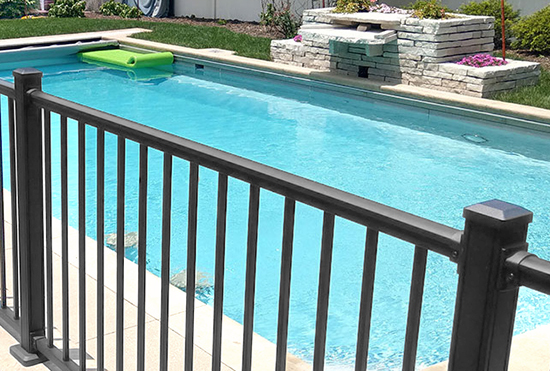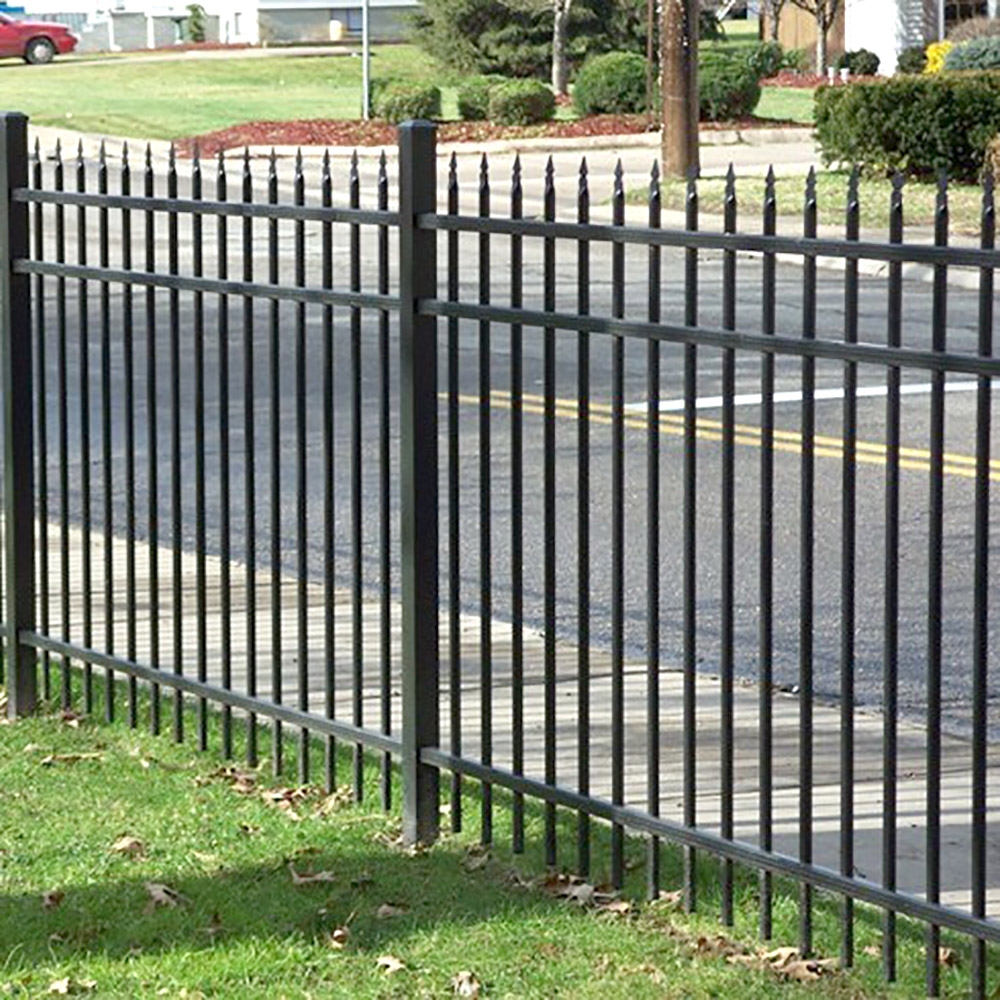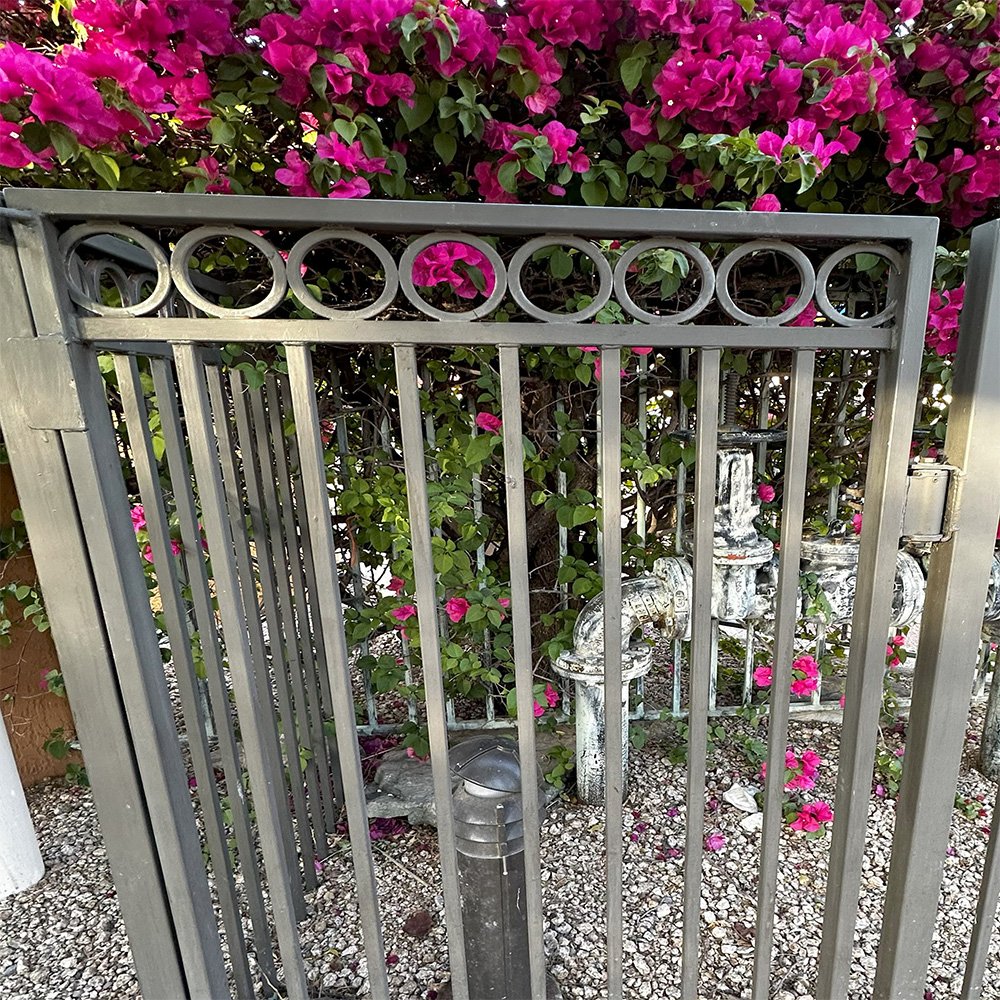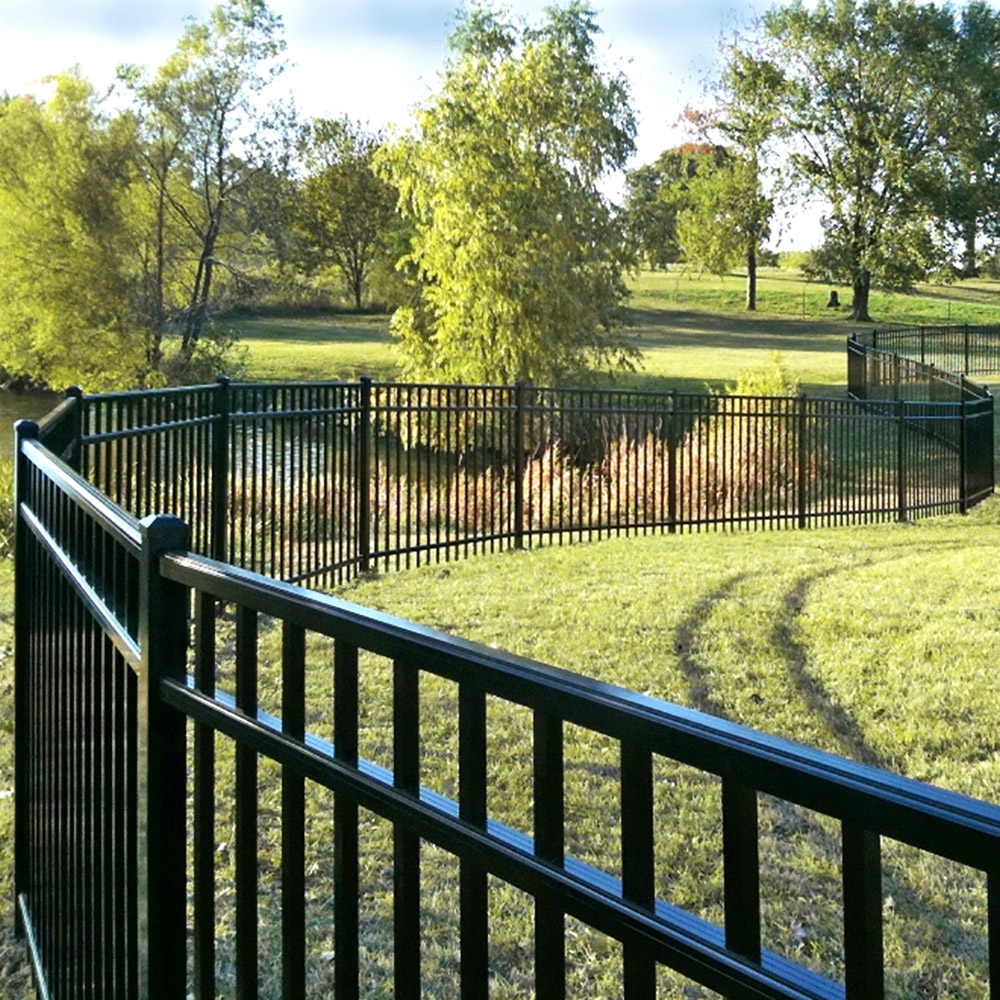Pool Code Safety Compliance For Aluminum Fences

A swimming pool fence is designed to be placed around swimming pools and to create a physical barrier that helps restrict small children's unsafe swimming pool access. To comply with BOCA/ICC building codes, swimming pool fences must include self-closing hinges and self-latching gates. Swimming pool fences are designed so that young children are unable to either climb over them or go through them by either slipping through the pickets or opening the gate. They are manufactured to strict standards to be sturdy, durable, and non-climbable.
Who Creates Pool Code Compliance Guidelines?
BOCA, ICC, ICB, and ISPSC are all organizations that are in charge of regulating and implementing safety laws regarding health and safety concerns for buildings based upon prescriptive and other performance-related requirements. Often these terms are interchangeable and fully compatible with all other safety codes and ordinances. The code provisions are intended to protect public health and safety while avoiding unnecessary costs and preferential treatment of specific materials or construction methods.
In the United States, no federal laws strictly enforce pool safety standards. However, many states and municipalities have created standards that must be complied with when constructing a swimming pool. BOCA/ICC was the first organization that outlined strong safety standards for swimming pool fences. In an effort to eliminate or reduce the accidental drowning of children, many communities have recognized these standards worldwide. Certain states are more strict with their laws. The most populated states with Pools, such as Arizona, California, Florida, and Texas, have special statutes that discuss all pool fencing types, including frameless glass railings. Above-ground pools must also follow state and local pool codes if the water is at least 18 inches deep.
Pool Code Safety Organizations:
BOCA: Building Officials and Code AdministratorsICC: International Code Council
IBC: International Building Code
ISPSC: International Swimming Pool and Spa Code
Pool Fence:
A successful pool fence prevents a child from getting OVER, UNDER, or THROUGH and keeps the child from gaining access to the pool except when supervising adults are present. If the pool fence barrier is too low or has handholds/footholds to use for climbing, then the fence will not meet BOCA compliance. The top of the pool fence needs to be at least 48 inches above the ground, measured from the side of the fence that faces away from the swimming pool.
Preventing a child from getting through a pool barrier can be done by restricting the sizes of openings in a pool fence and by using self-closing and self-latching gates. The most commonly used method for measuring openings in fences and other barriers surrounding pools is the 4-inch sphere rule, which is a rule designed for checking openings within the pool fence that would be big enough for a small child's head and chest to fit through.
Gates and Entryways:
There are two kinds of gates that might be found on residential property: pedestrian gates and vehicle gates. Both can play a part in the design of a swimming pool barrier. All gates should be designed with a BOCA-compliant locking device.
Pedestrian gates are the gates people enter through, and fences with these entryways should be equipped with a gate that restricts physical access to the pool. These gates should open outwards from the pool and use self-closing hinges and self-locking latches. If a self-closing, self-locking gate is left unlatched, a properly designed gate will close and latch if a child attempts to push the gate open. The weakest link in the strongest and highest fence is a gate that fails to close and latch completely. A gate must be in proper working order for it to close completely every time.
When the release mechanism of the self-latching device on the gate is less than 54 inches from the bottom of the gate's release mechanism should be at least 3 inches below the top of the gate on the side facing the pool. Placing the release mechanism at this height prevents a young child from reaching over the top of a gate and releasing the gate latch. The gate and barrier should have no opening greater than 1/2 inch within 18 inches of the latch release mechanism. This prevents a young child from reaching through the gate and releasing the latch.
Using The Home As Part of The Pool Fence Barrier:
In many homes, doors open directly from the house onto the pool area or a patio leading to the pool. In these cases, the side of the house leading to the pool plays an important role as the pool barrier. Passage through any door from the house to the pool should be controlled by security measures such as door locks and alarms.
A fence surrounding the pool is better than one with the house on the fourth side. Pool fences need to be a minimum of 4 feet high. If the home serves as one side of the barrier, install door alarms on all doors leading to the pool area. Ensure the doors have self-closing and self-latching devices that are out of reach of children to prevent them from opening the door and gaining access to the pool.
BOCA Pool Codes:
- 1. The top of the barrier shall be at least 48 inches above finished ground level measured on the side of the barrier, which faces away from the swimming pool. The maximum vertical clearance between the finished ground level and the barrier shall be 2 inches measured on the side of the barrier, which faces away from the swimming pool. Where the top of the pool structure is above finished ground level, such as an above-ground pool, the barrier shall be at finished ground level, such as the pool structure, or shall be mounted on top of the pool structure. Where the barrier is mounted on the pool structure, the opening between the top surface of the pool frame and the bottom of the barrier shall not allow passage of a 4-inch diameter sphere.
- 2. Openings in the barrier shall not allow passage of a 4-inch diameter sphere.
- 3. Solid barriers shall not contain indentations or protrusions except normal construction tolerances and tooled masonry joints.
- 4. Where the barrier is composed of horizontal and vertical members and the distance between the tops of the horizontal members is less than 45 inches, the horizontal members shall be located on the swimming pool side of the fence. Spacing between vertical members shall not exceed 1-3/4 inches in width. Decorative cutouts shall not exceed 1-3/4 inches in width.
- 5. Where the barrier is composed of horizontal and vertical members and the distance between the tops of the horizontal members is 45 inches or more, spacing between the vertical members shall not exceed 4 inches. Decorative cutouts shall not exceed 1-3/4 inches in width.
- 6. Maximum mesh size for chain link fences shall be a 1-1/4 inch square unless the fence is provided with slats fastened at the top or bottom, which reduce the openings to not more than 1-3/4 inches.
- 7. Where the barrier is composed of diagonal members, such as a lattice fence, the maximum opening formed by diagonal members shall not be more than 1-3/4 inches.
- 8. Access gates shall comply with the requirements of items 1 through 7 of section 421.10.1 and shall be equipped to accommodate a locking device. Pedestrian access gates shall open outwards away from the pool and shall be self-closing and have a self-latching device. Gates other than pedestrian access gates shall have a self-latching device. Where the release mechanism of the self-latching device is less than 54 inches from the bottom of the gate: (a) the release mechanism shall be located on the poolside of the gate at least 3 inches below the top of the gate, and (b) the gate and barrier shall not have an opening greater than 1/2 inch within 18 inches of the release mechanism.
- 9. Where a wall of a dwelling unit serves as part of the barrier and contains a door that provides direct access to the pool, one of the following shall apply:
- 9.1. All doors with direct access to the pool through that wall shall be equipped with an alarm that produces an audible warning when the door and its screen, if present, are opened. The audible warning shall commence not more than 7 seconds after the door and door screen, if present, are opened and shall sound continuously for a minimum of 30 seconds. The alarm shall have a minimum sound pressure rating of 85 Dba at 10 feet, and the sound of the alarm shall be distinctive from other household sounds, such as smoke alarms, telephones, and doorbells. The alarm shall automatically reset under all conditions. The alarm shall be equipped with manual means, such as touchpads or switches, to temporarily deactivate the alarm for a single opening from either direction. Such deactivation shall last for not more than 15 seconds. The deactivation touchpads or switches shall be located at least 54 inches above the door's threshold.
- 9.2. All doors with direct access to the pool through that wall shall be equipped with a self-closing and self-latching device with a release mechanism located a minimum of 54 inches above the floor. Swinging doors shall open away from the pool area.
- 9.3. The pool shall be equipped with a power safety cover. Where in a closed position, the cover shall be capable of holding a weight of 485 pounds, shall not have any openings that allow passage of a 4-1/2 inch sphere, and shall incorporate a system to drain standing water that collects on the cover. The cover control switch shall be permanently installed by NFPA 70, listed in chapter 35, and be key-operated and of a spring-loaded or momentary contact type. Where the switch is released, the cover operation shall stop instantly and be capable of reversing direction immediately. The switch shall be in the line of sight of the complete pool cover.
- 10. Where an above-ground pool structure is used as a barrier or where the barrier is mounted on top of the pool structure, and the means of access is a fixed or removable ladder or steps, the ladder or steps shall be surrounded by a barrier that meets the requirements of items 1 through 9 of section.
- 10.1. A removable ladder shall not constitute an acceptable alternative to enclosure requirements.
- 10.2. Indoor private swimming pool: All walls surrounding an indoor private swimming pool shall comply with section 10.1, item 9.
- 10.3. Prohibited locations: Barriers shall be located to prohibit permanent structures, equipment, or similar objects from being used to climb the barriers.




